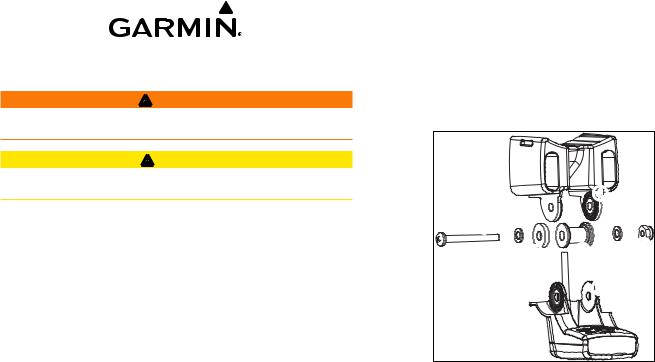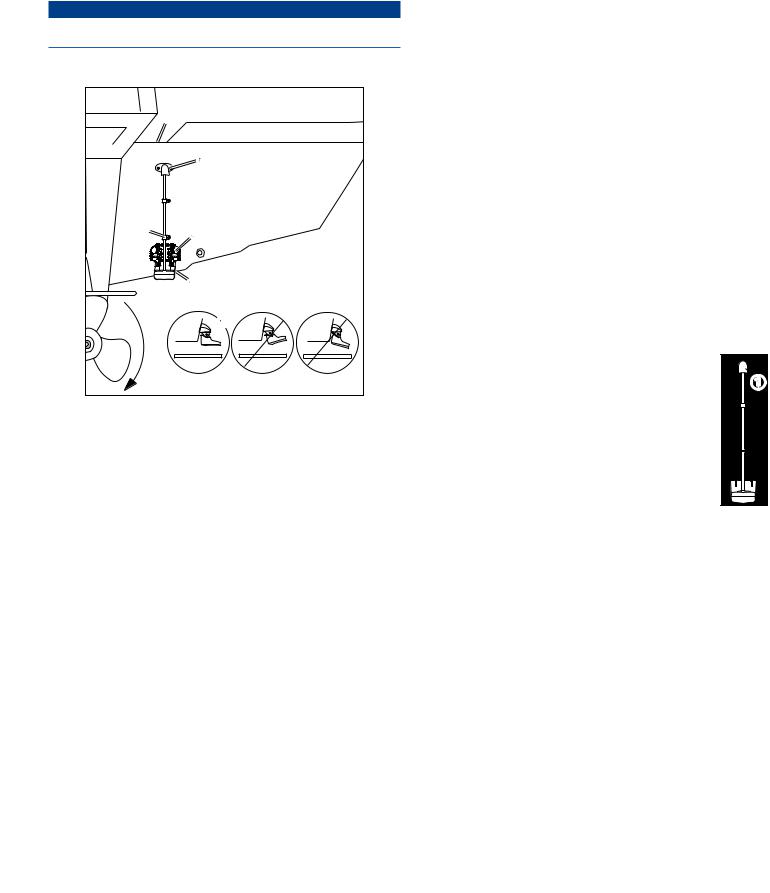Garmin ECHO 500C, ECHO 150, ECHO 300C, ECHO 100, ECHO 200 INSTALLATION INSTRUCTIONS

echo™ Installation Instructions
Warning
See the Important Safety and Product Information guide in the product box for product warnings and other important information.
caution
Always wear safety goggles, ear protection, and a dust mask when drilling, cutting, or sanding.
Follow these instructions to properly install the all of the components provided with your echo 100/150/200/300c/500c /550c.
Contact Garmin
Contact Garmin Product Support if you have any questions while using your echo. In the USA, go to www.garmin.com/support, or contact Garmin USA by phone at (913) 397.8200 or (800) 800.1020.
In the UK, contact Garmin (Europe) Ltd. by phone at 0808 2380000.
In Europe, go to www.garmin.com/support and click Contact Support for in-country support information, or contact Garmin (Europe) Ltd. by phone at +44 (0) 870.8501241.
Tools Needed
•Drill and drill bits
•3/8 in. wrench or socket
•Masking tape
•Number 2 Phillips screwdriver
•Marine sealant
•Hardware for the swivel mount (bolts or screws) (page 3)
Installation Preparation
Before permanently installing any part of your echo, plan the installation by determining the location of the various components. Verify that the cables are long enough to connect the components to each other and to power.
About the Transducer
The transducer is the component of your echo that transmits sound waves through the water and receives them to relay the information to your echo device. With the supplied hardware, you can install the included transducer on the transom of your boat (page 1) or on your trolling motor (page 3).
If you already have an existing Garmin 6-pin dual-beam transducer on your boat, you can use it with your echo device by installing an adapter cable (sold separately).
About the echo Mount
The echo device can be mounted using the included swivel-mount bracket (page 3), or it can be mounted flush with the dashboard using the appropriate flush-mount kit (sold separately).
When planning a mounting location, choose a location that you can see as you operate your vessel, provides easy access to the keys on the echo, and is the appropriate distance from a compass (page 6).
Assembling the Transducer
1.Insert the rubber washer and the plastic spacer into the transducerat the same time.
Do not add any lubrication to the rubber washer.
|
|
|
|
|
|
|
|
|
|
||
|
|
|
2.Pull the cable back and slide the transducer into the mounting bracket .
3.Place a 5 mm flat washer on the 10-32 x 1.75 in. screw and insert the screw through the mounting bracket, transducer, spacer, and rubber washer.
4.Place a 5 mm flat washer on the exposed end of the 10-32 x 1.75 in. screw, and fasten it with the 10-32 lock nut .
Do not tighten the 10-32 lock nut.You will adjust the transducer and tighten the nut after you install the transducer on the boat.
Installing the Transducer on a Transom
Selecting a Transom-mount Location
Select a transom-mount location while considering these guidelines for optimal performance.
•Mount the transducer as close to the center of the boat as possible.
•Do not mount the transducer behind strakes, struts, fittings, water intake or discharge ports, or anything that creates air bubbles or causes the water to become turbulent.
The transducer must be in clean (non-turbulent) water for optimal performance.
•Do not mount the transducer in the path of the propeller on singledrive boats.
The transducer can cause cavitation that can degrade the performance of the boat and damage the propeller.
•On twin-drive boats, mount the transducer between the drives, if possible.
•Do not mount the transducer in a location where it might be jarred when launching, hauling, or storing.
February, 2011 |
190-01312-02 Rev. B |
Printed in Taiwan |

Installing the Transom-Mount Hardware
Notice
Do not cut the transducer cable. Cutting the transducer cable will void your warranty.
1.Position the transducer mount at the selected mounting location on the transom (page 1).
|
|
|
|
|
|
|
|
|
|
2.Align the transducer parallel with the water line , and mark the center location of each hole on the transducer mount.
3.Using a 5/32 in. (4 mm) bit, drill the pilot holes approximately 1 in. (25 mm) deep at the marked locations, while taking the following precautions.
•To avoid drilling the holes too deep, wrap a piece of tape around the bit at 1 in. (25 mm) from the point of the bit to act as a guide.
•If you are installing the bracket on fiberglass, place a piece of tape over the pilot-hole location to reduce cracking of the gel-coat.
4.Apply marine sealant to the included 30 mm M5 screws, and loosely attach the transducer assembly to the transom.
5.Adjust the transducer assembly so that it extends beyond the bottom of the transom approximately 1/8 in. (3 mm) on fiberglass hulls or 3/8 in. (10 mm) on aluminum hulls
6.Make sure that the transducer is aligned parallel with the water line.
7.Tighten the 10-32 locking nut until it touches the mounting bracket and then tighten 1/4 turn more (do not overtighten).
8.If you would like to route the cable through the transom, choose a passthrough location well above the waterline and mark it.
9.Use a 5/8 in. (16 mm) drill bit to drill a pass-through hole completely through the transom.
10.Place a cable clamp on the transducer cable , approximately one third of the distance between the transducer and the top of the transom or the pass-through hole.
11.Mark the pilot-hole location for the cable clamp, and, using a 1/8 in. (3.2
mm)bit, drill a pilot hole approximately 3/8 in. (10 mm) deep.
12.Apply marine sealant to the included 12 mm M4 screw, and attach the cable clamp to the transom.
13.Repeat steps 10–12 using the other cable clamp.
14.Route the transducer cable to the echo device.
• If you are routing the cable using a pass-through hole, feed it through the hole you drilled in step 8, and install the cable-entry cover (page 2).
• If you are not routing the cable using a pass-through hole, route the cable up and over the top of the transom .
Avoid routing the cable close to electrical wires or other sources of electrical interference.
Installing the Cable-Entry Cover
If you routed the cable through the transom after you installed the transducer, install the cable entry cover to keep water from entering your boat.
1. Place the cable-entry cover over the hole and the cable, |
|
|
with the opening pointing downward, and mark the location |
||
|
||
of the two pilot holes. |
|
2.Remove the cable-entry cover, and, using a 1/8 in. (3.2 mm) bit, drill the pilot holes approximately 3/8 in. (10 mm) deep.
3. Fill the pass-through hole with marine sealant so that it covers 


 the cable completely, and that there is excess sealant around
the cable completely, and that there is excess sealant around 












 the hole and the cable.
the hole and the cable. 



4. Place the cable-entry cover over the hole and the cable, with the opening pointing downward.
5.Apply marine sealant to the included 12 mm M4 screws, and attach the cable-entry cover to the transom.
6.Wipe away any excess marine sealant.
2 |
echo Installation Instructions |
